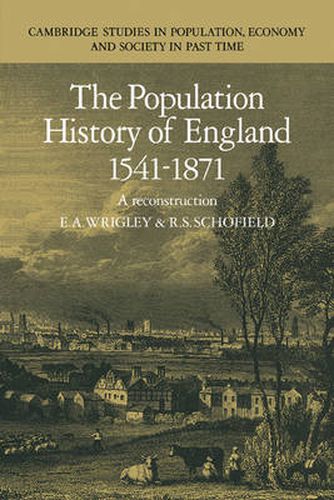Readings Newsletter
Become a Readings Member to make your shopping experience even easier.
Sign in or sign up for free!
You’re not far away from qualifying for FREE standard shipping within Australia
You’ve qualified for FREE standard shipping within Australia
The cart is loading…






This is the first paperback edition of a classic work of recent English historiography, first published in 1981. In analysing the population of a country over several centuries, the authors qualify, confirm or overturn traditional assumptions and marshal a mass of statistical material into a series of clear, lucid arguments about past patterns of demographic behaviour and their relationship to economic trends. The Population History of England presents basic demographic statistics - monthly totals of births, deaths and marriages - and uses them in conjunction with new methods of analysis to determine population size, gross production rates, expectation of life at birth, age structure and net migration totals. The results make it possible to construct a new model of the interplay of economic and demographic variables in England before and during the industrial picture of English population trends between 1541 and 1871 is a remarkable achievement and in a new, short preface, the authors consider the debate engendered by the book, the impact of which has been felt far beyond the traditional disciplinary confines of historical demography.
$9.00 standard shipping within Australia
FREE standard shipping within Australia for orders over $100.00
Express & International shipping calculated at checkout
This is the first paperback edition of a classic work of recent English historiography, first published in 1981. In analysing the population of a country over several centuries, the authors qualify, confirm or overturn traditional assumptions and marshal a mass of statistical material into a series of clear, lucid arguments about past patterns of demographic behaviour and their relationship to economic trends. The Population History of England presents basic demographic statistics - monthly totals of births, deaths and marriages - and uses them in conjunction with new methods of analysis to determine population size, gross production rates, expectation of life at birth, age structure and net migration totals. The results make it possible to construct a new model of the interplay of economic and demographic variables in England before and during the industrial picture of English population trends between 1541 and 1871 is a remarkable achievement and in a new, short preface, the authors consider the debate engendered by the book, the impact of which has been felt far beyond the traditional disciplinary confines of historical demography.